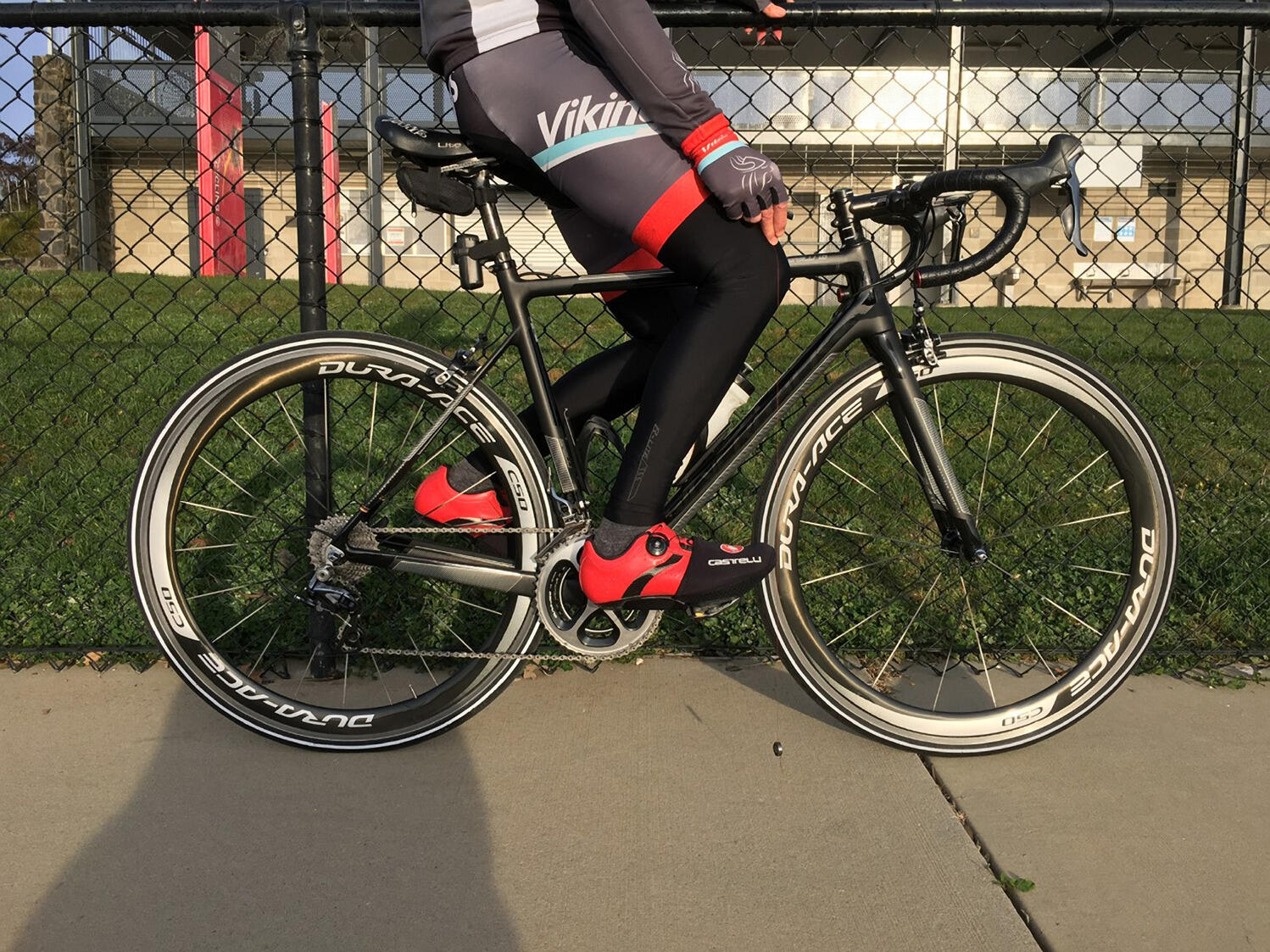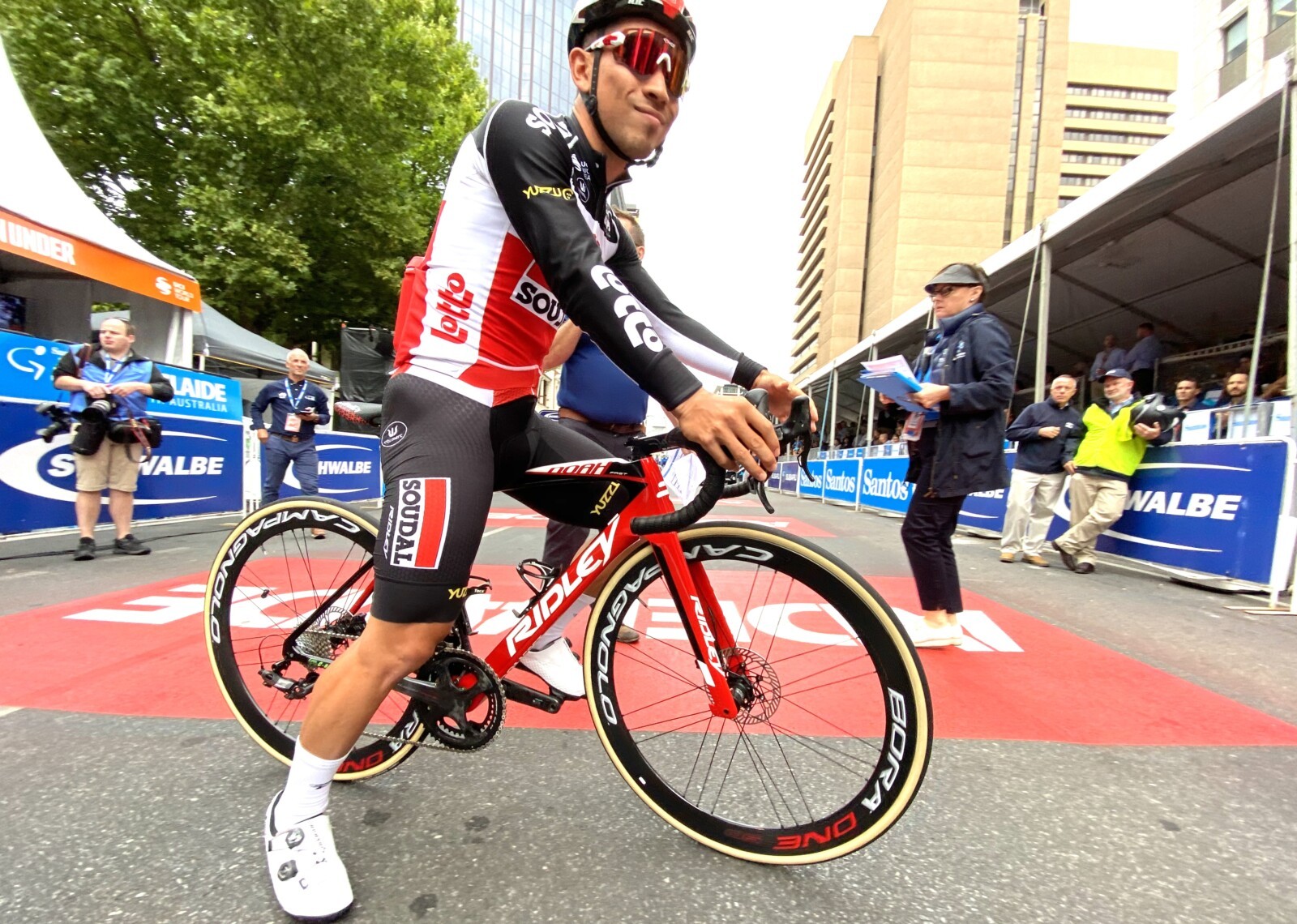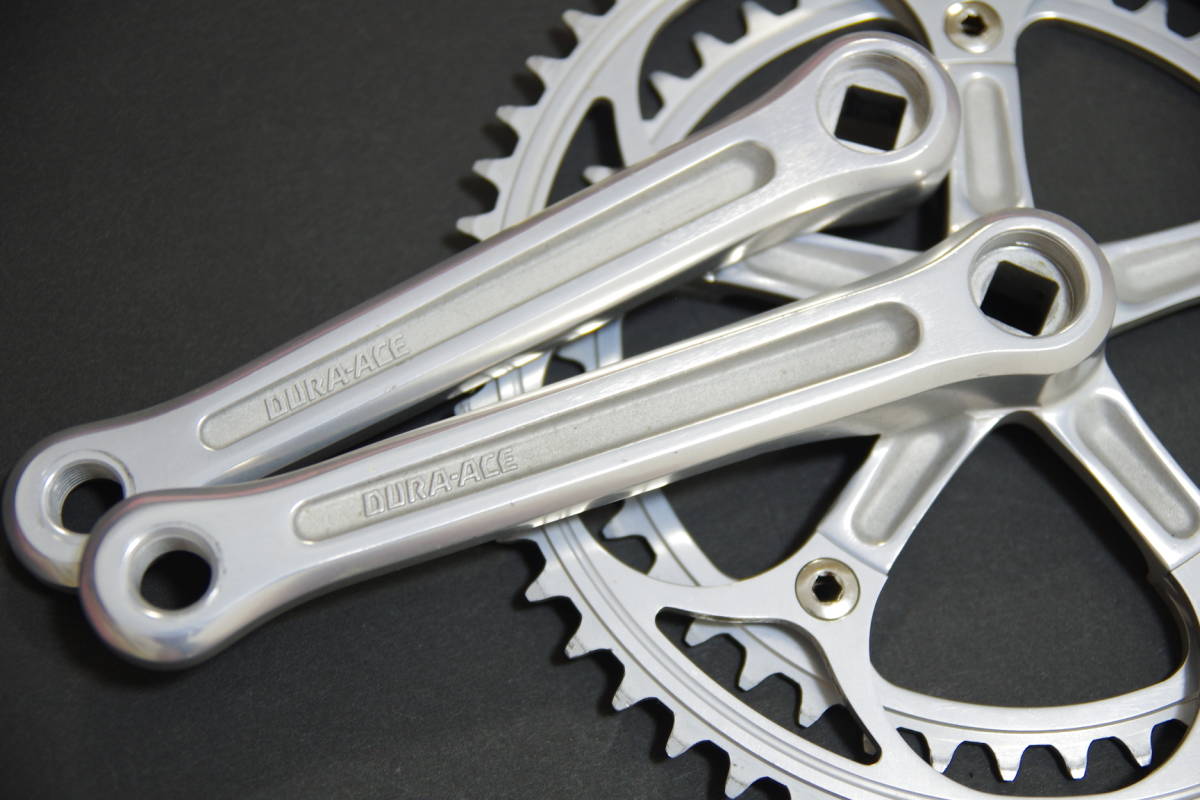Trends in crank lengths have varied over the years and, just like bike riders, cranks come in various shapes and sizes. Here Dr Michael Hanslip takes an in-depth look at crank length and how it can affect your performance and efficiency.
Bike riders come in all shapes and sizes. I think we all agree that the bike itself has to be of an appropriate dimension for a rider’s size, with height being the most obvious link to frame size.
But if we look back at the 1970s, frames got taller as they went up in size, but not much longer, if at all. One set of lugs will accommodate many possible frame sizes if the only thing that changes is the height of the bike so inexpensive bikes in particular were stuck with this paradigm. The only problem is that arms and legs both increase in length as the rider gets taller.
To fit long arms requires a longer top tube on the taller frame. Longer legs are best paired with both a higher seat and longer cranks, but almost all (if not absolutely all) cranks sold in the 1970s were 170mm long.
By the 1980s, both variable top tubes and variable cranklengths were routinely available as proper bike fitting became possible. It is practical to produce eight frame sizes (with 700C wheels) from 48cm to 62cm in 2cm gaps, fitting almost everyone from 155cm to 195cm tall. That is a 26 per cent range in rider size and a corresponding 30 per cent range in frame sizes. Cranks then (and now) routinely came in three lengths: 170mm, 172.5mm and 175mm. That’s a 3 per cent range in size. A few rare options extend from 165mm-180mm – a 9 per cent range.
The corollary of this lack of crank size range is the “old school” frame sizing method of decreasing the seat angle with each larger size. Within a single model of bike, the smallest frame has to have an extra-steep seat angle to fit the shorter rider on top of standard (too big) wheels, and the larger sizes have extra-slack seat angles to compensate for the too-short crank lengths offered.

One good bike fitting rule of thumb is knee over the pedal spindle (KOPS). When seated with pedal at three o’clock position, the knee should be directly over the axle of the pedal. The only way to achieve this for a taller rider is to move their butt further behind the bottom bracket – hence the slack seat angle.
PRESENT
Cranks are forged from a block of aluminium, or machined from a billet, or, more common these days, moulded out of carbon cloth. Industry resistance to increasing their number of SKUs, the cost of producing these, and a general “pretend the problem doesn’t exist” mentality means nearly everyone tries to cope with a small list of available crank lengths. I’ve read hundreds of articles and personal opinions about crank length and I have never seen a good argument why cranks shouldn’t scale with some body part (shin, thigh, total height) of the rider’s anatomy.
Lennard Zinn is a very tall American who builds eponymous frames aimed at other tall cyclists – he produces his own cranks in lengths up to 220mm to compensate for the industry’s refusal to address the needs of the tall. For me, 180mm cranks were a revelation, and are probably still 15mm-20mm too short).
…You pedal a lot when you ride
(90 rpm x 3 hours = 16,000 pedal strokes…
When SRAM started making higher-end cranks out of carbon they also stopped offering 180mm as an option, but still do the full range below that. When Campagnolo swapped from a 5-arm spider to a 4-arm spider, they rationalised their line to the three standard lengths. Part of the problem here is the scarcity of really tall cyclists demanding really long cranks – XL frames made up only 2 per cent of sales for one larger bike brand I asked.

It is only in the past few years that road frames have varied by more than linear dimension. With carbon it is possible – desirable even – to vary the lay-up to achieve similar ride “feel” regardless of size. For some brands that extends to chainstay length and fork rake both varying across sizes. But not bottom bracket height. Imagine a typical road bike with 170mm cranks – the clearance under the bottom pedal is around 100mm. Now install 220mm cranks on that bike – clearance has diminished to only 50mm. You wouldn’t want to pedal that bike in a corner.
More “new school” sizing uses a single seat angle across the range. However, the only way this actually works, with respect to KOPS, is to up the crank length with each size, too. As another rule of thumb, the cranks should be around 1 per cent of the rider’s height – it might well turn out to be more complicated than this, but compared to where we are now it would be revolutionary, and a start – meaning 155mm-195mm long for those eight bike sizes mentioned above.
PROBLEM
The knee joint optimally functions in a set range of motion. Not too much bend and not too little bend is best for knee performance and joint health. It demands a longer crank to move a longer leg through the same range of motion as a shorter leg on a shorter crank. I would also argue that the feet of any size rider can move at an optimal linear velocity – not angular velocity – so the larger rider also requires higher gearing to achieve the same speed at a lower cadence compared to the shorter rider.

Changes in crank length require time for adaptation, making it almost useless to experimentally test ideal crank length across a range of cyclists. One experiment found a 155mm crank was best for almost every test rider, and another found a 185mm crank was best. Some riders are sensitive to crank length while others are not fazed even by having different crank lengths on the same bike (170mm right, 175mm left – by accident – went unnoticed by one rider for a whole racing season). Determining optimal crank length requires some theorising because historical data fails so miserably.
SOLUTION
My opinion is that we should be aiming to capture the same experience enjoyed by riders on a 54cm frame (those best served by available parts) for all cyclists regardless of frame size. And the core missing ingredient in achieving this is a broader selection of crank lengths in the mainstream. To make everything work perfectly, we’d have to have a number of wheel sizes too (if 622mm rims are perfect for a 54cm frame, then 559mm rims are perfect for a 48cm frame, which they often use, but my 62cm frame would then have 710mm rims).
A bicycle is not like a car or even a motorbike. In a car, the seat slides fore-aft at least 30cm and many cars offer 10+cm of vertical seat adjustment. The main difference is the obvious one, you pedal a bike and don’t actually do that much with your legs in either a car or on a motorcycle. Legs are everything on a bike.
Almost 150 years ago, when bikes were new, seat height, wheel size and crank length were all made individually for the rider. Mass production brought vast improvements in performance and reductions in price, but we have a long way to go before we get back to the original system of fitting all parts of the bike to the rider.
Crank Length Tips
Thoughts on selecting a crank length
1) Crank lengths are almost always a practical compromise. BMX riders don’t ever sit and use much longer cranks than roadies. Downhillers also don’t sit but use short cranks for ground clearance. Track riders, like roadies, mix up standing and sitting but use slightly shorter cranks to not hit the banking. Expected crank length and bottom bracket height are inter-dependent.
2) You pedal a lot when you ride (90 rpm x 3 hours = 16,000 pedal strokes). Legs adapt to the circle they are pedalling. If you want to trial a new crank length, give it some time.
3) Gearing and crank length are linked. At the same cadence your feet are moving faster with a longer crank. Optimum results from changing crank length are achieved if gearing is also adjusted.
4) Evaluating crank length is best done at the end of a hard ride, rather than when fresh. Ideal crank length permits a rider to ride faster for longer.

Dura-Ace alloy cranks.
Crank length history
A. One hundred and fifty years ago, the Penny-Farthingprovided custom gearing and custom crank length based on leg length for each cyclist.
B. After WWII, road bikes were mass produced on an almost one-size fits all paradigm that was fantastic if you rode a 54 cm frame (the most common size); with 170 mm cranks the only option.
C. Crank length choices flourished in the 80s, but topped out at 180 mm (the longest you can safely put on a production bike without constant pedal strikes) – neglecting the needs of the tallest riders.
D. After a move in the 90s to limit the number of frame sizes to reduce production costs, brands are now offering more sizes than ever before. And paradoxically the selection of crank length is now smaller than it was in the 80s.OPPOSITE PAGE, FROM TOP:
An adjustable crank that incorporates a level, the perfect device for accurately working out optimal and most efficient length. The crank should measure around 1% of a rider’s height.

